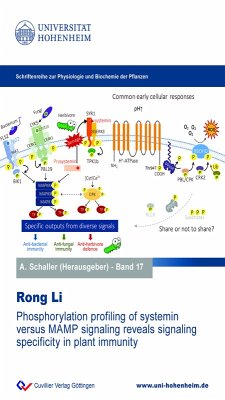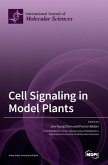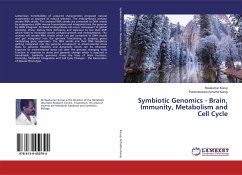Plasma membrane-localized pattern recognition receptors (PRRs) detect both microbe-associated molecular patterns (MAMPs) such as flg22 and chitin, and host-derived signals like systemin. While early signaling events (phosphorylation, ROS burst, MAPK activation) are largely similar, they lead to different biological outcomes: ¿ MAMPs activate innate immunity, ¿ Systemin induces wound and herbivore defense responses. To investigate how specificity arises, phospho-proteomics was applied in tomato cells (wild type vs. systemin receptor-deficient). In total, 4701 phospho-sites on 2119 proteins were identified. Using imputation and clustering, seven temporal phosphorylation patterns were observed: ¿ Systemin uniquely caused dephosphorylation at 1-15 min, ¿ flg22 triggered an early rapid phosphorylation response, ¿ Chitin mainly induced late phosphorylation events. Specificity was illustrated by three protein groups: 1. RLCK/PBL kinases ¿ different family members respond in an elicitor-specific way. 2. S-type anion channel SLAC1 ¿ carries a single regulatory site, differentially phosphorylated depending on the elicitor. 3. Phosphatase PLL1a ¿ has multiple elicitor-specific phospho-sites (flg22: Ser50-59, chitin: Ser86-89, systemin: Ser163-181). Network analysis suggested that PLL1a regulates RBOHs, which was functionally validated using phospho-mimic/dead PLL1 mutants in Nicotiana.
Bitte wählen Sie Ihr Anliegen aus.
Rechnungen
Retourenschein anfordern
Bestellstatus
Storno








